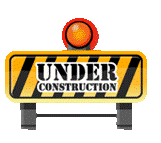Raising The Safety Bar Through Enhancing Interpersonal Communication
By Dana Borowka, MA
[dropcaps type=”circle” color=”” background=””]A[/dropcaps] client made an interesting comment once about interpersonal communication: “It’s not what you say – it’s what they heard.” In the world of safety, how you communicate and how it is heard can make a huge impact on every individual you work with, plus a few you don’t even know. After all, safety  affects many individuals not only in your organization, but also family members and friends of staff members. Be sure to listen to the web conference on this topic at the end of this article.
affects many individuals not only in your organization, but also family members and friends of staff members. Be sure to listen to the web conference on this topic at the end of this article.
Raising the Safety Bar
To raise the safety bar through better interpersonal communications, there are three key steps for dealing with others:
- Know your participants – Know who you are dealing with. The key to effective management is know thy staff.
- Show empathy – Strive to understand different view points to see where people are coming from. As an example, sometimes an employee needs a step-by-step process for doing a task and a manager gets frustrated because they just want them to jump and do it. Of course, this can be frustrating for both parties. The step-by-step person needs the process and probably won’t move forward because they are concerned about doing it wrong, getting yelled at or costing the company money.
- Work from a vision – Know where you want to go with an individual. If you don’t know, how will they know?
If your organization does any kind of in-depth personality or work style assessments, it is always helpful to review the data to understand or empathize with how someone is thinking or approaching things. If your company does not do in-depth personality or work style assessments, talk with your management team about incorporating some type of assessment during the hiring process so the information can be used in managing individuals. That translates into understanding how to best communicate once they come aboard. You can also use the information for your current team which can truly affect the bottom line (think of what miscommunication costs in lives and to the bottom line).
An in-depth personality and work style assessment will help in understanding how someone problem solves, how they deal with stress, and their thought flow. You can literally see how someone will process information and share ideas, plus many other facets of how someone communicates.
Types of Miscommunication
There are typically four styles of miscommunication (think of which category your problem players fall into):
- Do they avoid or run away from the issue?
- Do they pretend conflict doesn’t exist?
- Do they give in or go along with the other person?
- Do they attack or try to win through force or overpower with criticism, insults, manipulation or name calling?
Do’s & Don’ts for Communication
Now that you have a good idea of who you are dealing with, here are some do’s and don’ts for effective one-on-one communication, especially when dealing with a heated or recurring issue:
- Do have respect for the other person (even though you don’t agree)

- Don’t take the conflict personally
- Do be a good listener. This can be tough. You may want to just be directive since you know what needs to get done. This won’t help in the long run. You need to really listen to understand where they are coming from. Avoid interrupting and ask questions only when they are finished speaking. Interrupting can be interpreted as being disrespectful. You also want to watch body language. Sometimes the most important thing in communication is to hear what isn’t being said.
- Don’t assume they understood. In order to assure you truly understand what someone is attempting to communicate, use active listening. Paraphrase what you think the other person is stating and ask them if that’s correct. If not, have them restate it and then paraphrase again to make sure you’ve got it right. Use “I” statements when you are discussing the topic, such as “I feel it is not constructive when you speak to me in that manner, because it feels like you are being disrespectful to me.” Try this formula for success:
– State your feelings clearly without attacking the other person.
– Focus on the problem not the person
– Look for common ground – a shared need you both want or can agree upon
– Uncover any hidden agendas – is something bothering the person that might be feeding into the problem?
– Take time outs to keep a conflict from escalating – not a 10-minute time out but several hours or the next day (unless it is life threatening)
Problem Solving
Once you’ve talked it through and truly listened to the person, then you can move into problem solving. Warning: if you jump to problem solving and haven’t really heard the person, the issue will keep coming up over and over and over again. Problem solving should be fairly simple if you’ve listened well and if the other person feels heard. Here are four steps to help you.
- Set an agenda – Define the top 3-5 items you want to focus on. Don’t try to solve the world’s problems all at one time. Typically if you do a couple of them the other items will take care of themselves
- Brainstorm – Write the ideas down and don’t say “but” or shoot down ideas when they are suggested.
- Sort through the ideas – Pick several or rank them as to which one’s look most promising at this time
- Evaluate your options – Once you select a couple of ideas then ask the following questions:
– What will happen if we do this?
– How will it impact others?
– Will everyone get what they want?
Come to a conclusion to try them out and then set a follow up date. It is vital to set a date and to check in to see how things are going. If this step isn’t taken, either the task will not be done or if it doesn’t work, you and others will be upset that the situation had dragged on.
 In closing, consider this quote from John Marshall of Dofasco Steel: “So many people spend so much energy on things that are beyond their control! It’s human nature, but I constantly ask people anytime something comes up, ‘what do you have control over, what don’t you have control over? What can you influence, or who can you go to that has some influence?’”
In closing, consider this quote from John Marshall of Dofasco Steel: “So many people spend so much energy on things that are beyond their control! It’s human nature, but I constantly ask people anytime something comes up, ‘what do you have control over, what don’t you have control over? What can you influence, or who can you go to that has some influence?’”
You now have the tools to raise the safety bar for better interpersonal communications. Remember what is most important is that you are teaching someone else how to constructively deal with a situation and come up with a solution. The goal is to allow for ideas to be shared and to mentor others in how to communicate and to create a safe work environment.
Listen to our teleconference audio: https://lighthouseconsulting.com/Radio/raisingsafety.mp3
Permission is needed from Lighthouse Consulting Services, LLC to reproduce any portion provided in this article. © 2014
Dana Borowka, MA, CEO of Lighthouse Consulting Services, LLC and his organization constantly remain focused on their mission statement – “To bring effective insight to your organization”. They do this through the use of in-depth work style assessments to raise the hiring bar so companies select the right people to reduce hiring and management errors. They also have a full service consulting division that provides domestic and international interpersonal coaching, executive onboarding, leadership training, global options for expanding your business, sales and customer service training, operational productivity improvement, 360s and employee surveys as well as a variety of workshops. Dana has over 25 years of business consulting experience and is a nationally renowned speaker, radio and TV personality on many topics. He provides workshops on hiring, managing for the future, and techniques to improve interpersonal communications that have a proven ROI. He is the co-author of the books, “Cracking the Personality Code” and “Cracking the Business Code”. To order the books, please visit www.lighthouseconsulting.com.
If you would like additional information on this topic or others, please contact your Human Resources department or Lighthouse Consulting Services LLC, 3130 Wilshire Blvd., Suite 550, Santa Monica, CA 90403, (310) 453-6556, dana@lighthouseconsulting.com & our website: www.lighthouseconsulting.com.
Lighthouse Consulting Services, LLC provides a variety of services, including in-depth work style assessments for new hires & staff development, team building, interpersonal & communication training, career guidance & transition, conflict management, 360s, workshops, and executive & employee coaching. Other areas of expertise: Executive on boarding for success, leadership training for the 21st century, exploring global options for expanding your business, sales and customer service training and operational productivity improvement.








